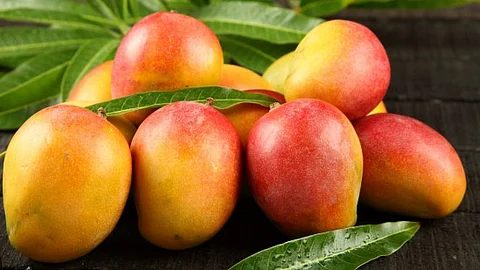

In Goa, summer is incomplete without the sweet, tangy, and juicy presence of mangoes, considered by many to be more than just a fruit. It’s a cultural marker, a culinary staple, and a symbol of the season that touches every Goan home, memory, and meal.
For locals like Pedru Aguiar from Colva, the mango is indispensable. “A summer without mangoes is unthinkable for any Goenkar,” he says, adding that the heat mangoes provide in summer “comes into play during the chilly monsoons.” His words echo across generations who wait all year for this seasonal delight.
The mango (Mangifera indica L.), native to India and a member of the cashew family (Anacardiaceae), has a long-standing presence in Indian mythology, including mentions in the Mahabharata, Ramayana, and early Buddhist and Jain texts. Legend even says Buddha was gifted a mango grove for peaceful meditation.
The word "mango" itself is believed to have come from the Malayalam word manna, which the Portuguese adopted as manga during their arrival in Kerala in 1498. Portuguese records, especially Garcia da Orta’s Colóquios dos simples e drogas da India (1553), praised mangoes as being “superior to all the fruits of Spain.” The Jesuits later boosted Goa’s mango legacy by creating over 100 grafted varieties, naming them after landlords, saints, and nobility.
Mangoes in Goa go beyond eating ripe fruit. They become part of pickles, jams, curries, and preserved delicacies. The Monserrate (also known as Monserrate de Bardez) variety is favoured for making Mangada (mango jam), known for its sweet-sour flavour and fibrous texture.
Other Goan mango delicacies include:
Chepnetullim toram: Raw mangoes pickled in brine with green chillies, ginger, and cashew nuts, stored with stones to keep them submerged.
Borlolim toram: Slit mangoes filled with spicy masala.
Ambea sollam: Sun-dried, salted mango slices used in cooking.
Miskut/Lonchem: Traditional mango pickles made with finely chopped raw mangoes.
Ambea Sáttam: Mango pulp sheets dried on oiled banana leaves under the summer sun.
Sãsav: A Hindu-style sweet-sour mango curry served with rice.
Arroz Coco: A Sunday delicacy made with rice, coconut milk, turmeric, spices, and served with chewy Gotam mangoes.
From Margão to Loutolim, mangoes are interwoven with childhood nostalgia. Antonio Andrade from Margão fondly recalls students sneaking mangoes from the church compound in the 1970s, only to be chased away by the priest. “There were originally 11 mango trees planted there, matching the 11 strokes of the bell during the Angelus,” he says.
Joyce Aguiar from Colva reminisces about Mangada-making days, when children would be tasked with peeling and squeezing mangoes by hand, while elders stirred the pulp in a copper utensil (sotel) using a long wooden spatula (dhái).
Loretta Andrade of Ambajim advocates involving children in these processes to keep culinary traditions alive. “Only if exposed at a young age will they carry on the legacy,” she says.
Goraksh Rasaikar from Loutolim recalls venturing to the kulagar (mango grove) with friends, throwing stones to bring down mangoes (gontã), washing and eating some at the spring, and bringing the rest home for cooking.
Mango pluckers played a vital seasonal role in Goan households, using baskets suspended from trees with coir ropes to gently collect mangoes. Rain-wet fruit was carefully wiped with warm cloths to prevent rot. For ripening, mangoes were placed in paddy straw with stems facing downward, a method still practiced in traditional homes.
Goa’s mango culture is not just about fruit but family, tradition, community, and time-honoured techniques. Whether it's the scent of ripe mangoes in straw, the sight of drying pulp on banana leaves, or the joy of homemade pickles, the king of fruits reigns supreme every Goan summer, rooted in the past, yet savoured in the present.